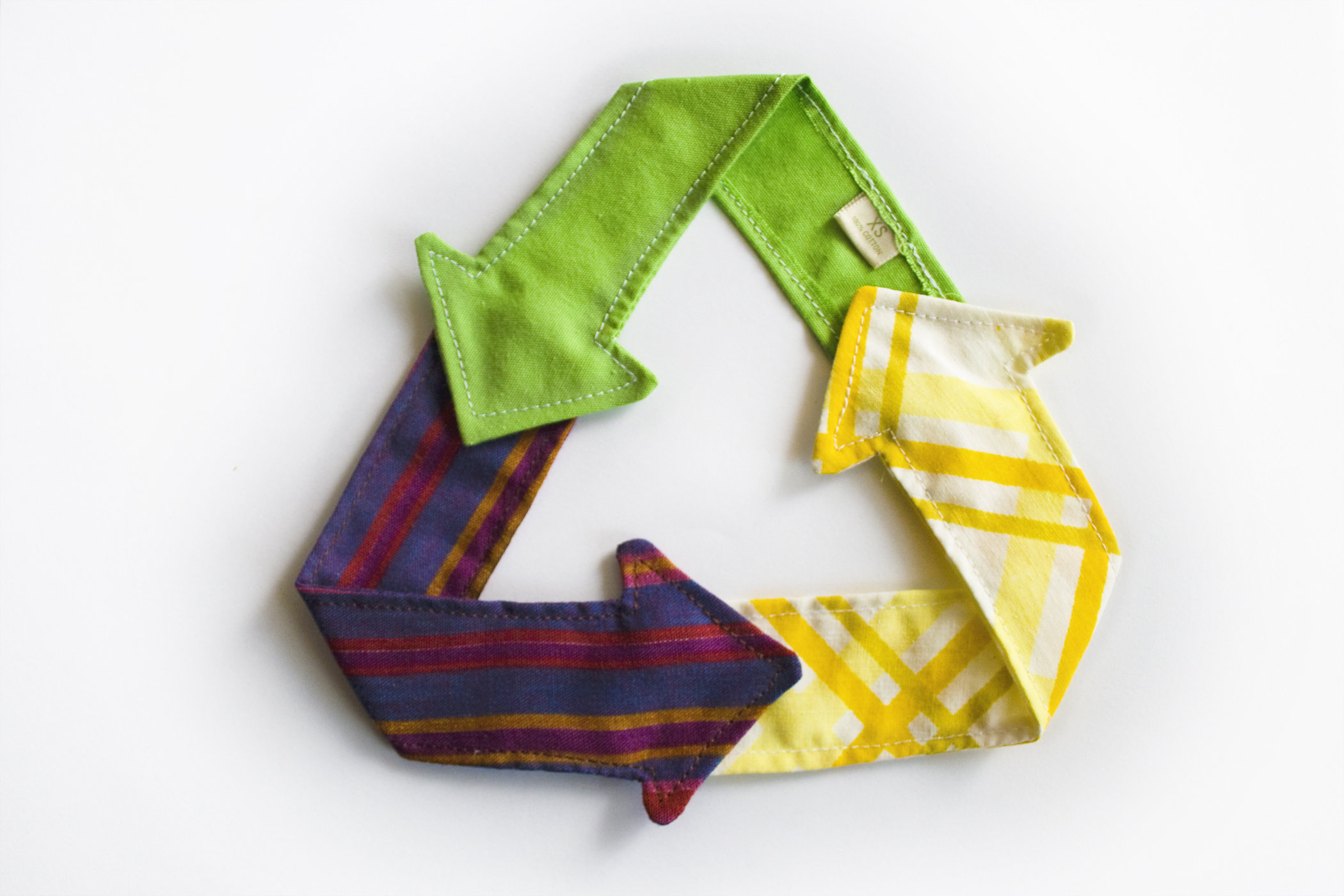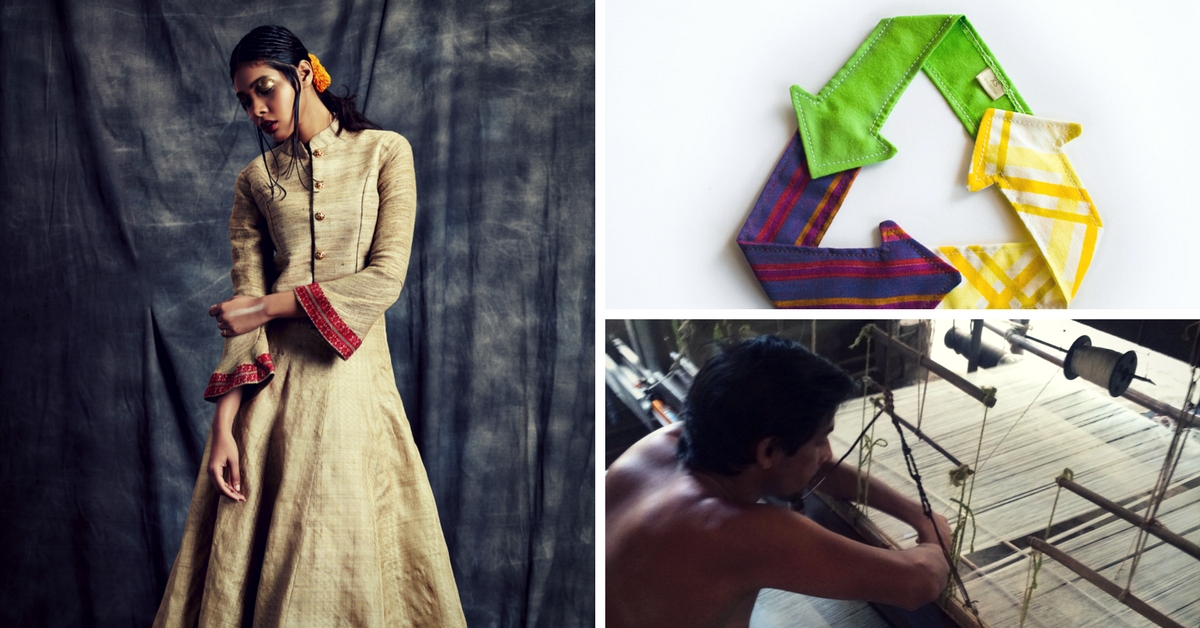Banana, pineapple, bamboo, jute, aloe vera, flax, hemp, beetroot, pomegranate, teak, sewali flowers…
No, this article is not about agricultural products or botanical names of plants. It is about fashion, fabric, colours and style!
Today, more and more people are consciously making efforts to veer away from environmental unfriendly clothes. Till a few years ago, there was a lot of talk about eco-friendly fashion. Now, this trend has a broader vision—sustainable fashion.
Designers today not only use fabric and dyes made out from the plants and fruits mentioned above but also try to make their work more sustainable and reduce their carbon footprint, by opting to work with local weavers and artisans.

In this way, they also help in generating employment in their surroundings, thereby sustaining them and their craft.
Also Read: 7 Eco-Friendly & Sustainable Ideas to Embrace Your Fashionable Side, Without a Big Budget
Leaders like Sonia Gandhi, Smriti Irani, Michelle Obama and celebrities like Emma Watson, Michael Fassbender, Gwyneth Paltrow, Vidya Balan, and Priyanka Chopra, have also helped in popularising sustainable fashion, by wearing organic clothes.
“We need celebrities to show off these clothes and also talk about them because we hope that this will get the masses to emulate them,” emphasises Premal Badiani, an Indian designer based in the US.
“I decided to work with sustainable fashion to put together a collection which I would be proud of. We all have the power to be influencers and make choices that are environmentally, socially and ethically conscious,” declares the designer who mostly used fabric made from plant pulp in her collection that was showcased at the New York Fashion Week in 2017.
The creation of sustainable fabrics is an intensive process which begins by looking at the conditions under which the plant has grown. It must be ensured that they have been grown without the use of chemicals, and minimum water and power have been consumed to maintain the fertility of the soil. Later, the transportation of raw material to the weavers should also be monitored—they should not travel a long distance—so that minimum carbon emission takes place. Once the fabric is woven, it is transported to the designers.
Also Read: Want to Live in Harmony With Nature? This Sustainable Lifestyle Coach Has Some Amazing Tips for You.
Many designers have begun to travel to different states, work with weavers and artisans there, and bring the desired fabric back to their workplaces.
Vaishali Shahdangule is a Mumbai-based designer, who travels to the villages of West Bengal and Madhya Pradesh to source Jamdhani and Chanderi fabric, and Anita Dongre works with weavers and artisan of Kutch to get Bandhani silk and cotton. Several other prominent and upcoming names in the fashion industry are striving to popularise sustainable fashion.
Guwahati-based designer Nandini Baruva presented her collection ‘Bhumisattva’ at the Lakme Fashion Week last year, and all of her work was centred around sustainable fashion.Nandini used fabric made from banana, pineapple (pina fabric) and Eri silk. Her collection even had accessories like bags and footwear that had been made from natural sources.
She says, “Plant-based yarns have to be appropriately treated. They all have a unique texture, colour and sheen, but to get the right flow for the garment, we blend these yarns with others like cotton or silk since, in their pure form, most of these yarns are sometimes stiff and fragile.”
An interesting fact to note here is that except for Eri and Muga silks (both extracted from silkworms without killing them), no other plant-based yarn can be woven to produce saris, because of their limited length and width. So, they are used to create Indo-Western silhouettes.
The sustainable method of producing plant-based yarns is not new to India or the world.
“Banana fabric was used to adorn deities and gods in the olden days and was used as a replacement for zari in weaving motifs in a sari, as it had gold-like appearance because of its natural colour. However, over the years, this fibre, along with other natural resource fibres, lost out because of the complex and labour intensive production methods adopted in mass production” explains Siddhant Beriwal who designed garments using banana fabric for his Bachelor’s degree final project.
Currently pursuing his Masters in International Fashion Marketing and Management, from Heriot-Watt University, Siddhant is planning to work in future with lotus fibre, alpaca wools, spider silk and vicuna fibre.
Also Read: Ethical Is In: Meet the Bengaluru-based Duo Helping Slow Fashion Go Mainstream!
He admits that in India, sustainable fashion is just gaining popularity. But lately, consumption patterns have changed among influencers, which is making the masses also aware of such clothes.
Companies like the Raymond Group and Grasim have also started producing organic or sustainable clothes. In fact, Grasim has been manufacturing viscose staple fibre (VFS) for many years. The Raymond group recently launched a branded Khadi label—Khadi by Raymond—under a partnership with KVIC and will promote the fabric globally.
As all the designers opine that it might take a couple of decades to make these clothes popular among the masses as, at present, they are clubbed under high-end apparel because their production cost is much higher than fabric produced by using the power loom.
Also Read: You Can Now Promote Sustainable Cotton Farming in India – by Just Dressing Up!
However, to look on the positive side, at least a start has been made. The media is writing about it, interest has been generated, and international fashion brands like Hermes, Gucci, Louis Vuitton (to name a few) have unveiled separate collections featuring sustainable clothes.
Our planet is suffering, and a lot of it is because of the way we create stuff. It is this dynamic of “trendy through necessity” that makes sustainable fashion such an exciting area right now.
Like this story? Or have something to share? Write to us: contact@thebetterindia.com, or connect with us on Facebook and Twitter.
NEW: Click here to get positive news on WhatsApp!
We bring stories straight from the heart of India, to inspire millions and create a wave of impact. Our positive movement is growing bigger everyday, and we would love for you to join it.
Please contribute whatever you can, every little penny helps our team in bringing you more stories that support dreams and spread hope.

